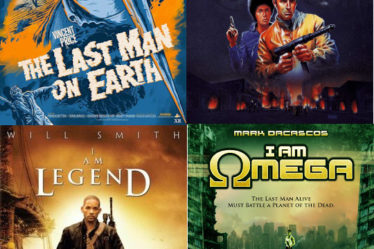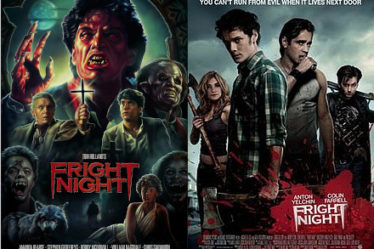
WARNING: This Review May Contain Spoilers
The following article involves two films based the true events experienced by the Lutz family in 1975 after moving into the house where Ronald DeFeo Jnr murdered his entire family. Interestingly, George Lutz claims he was unaware of, and had not given his permission, for the remake to be made…
Character Development
When watching the remake I asked myself one question, was the casting of Ryan Reynolds a way to give the film light relief? Instead I realised that it actually made the change in George’s character from happy and jokey to aggressive but you can see he is trying to fight it. I find that in the original film, the change isn’t as obvious with Brolin’s portrayal of George in comparison to the way Reynolds plays him – but I think this is because he has quite an intense look about him in general. I find it quite funny that they clearly had Reynolds keep his beard from Blade Trinity in an effort to make him look a little more like Brolin and possibly to fit in with when the film is set.
Christian Influence
I think I have covered the inclusion of Christianity in early horror films compared to modern ones previously and I think these films are proof of the change. For example, in the remake we only have the one mainstay priest with Father Callaway. However, in the original we have Father Delaney (who is introduced much earlier than Father Callaway), Sister Helena and Father Bolen along with other ancillary priests towards the end. I feel that what happens to each of these characters could be seen as comments on Christianity and the attitude towards it at the time of each film, hence the higher inclusion in the original film compared to the remake. Additionally, in the original film Father Delaney comes to the Lutz house to exorcise it whereas in the remake Kathy reaches out to Father Callaway for help.
Flies in the Ointment
As mentioned above, Father Delaney is introduced in The Amityville Horror much earlier in 1979 than Father Callaway in 2005 – meaning the exorcism scene happens earlier in the original film. However, you can guess this doesn’t go down very well with the house and means that Father Delaney is affected earlier, hence the inclusion of the additional Christian representatives. I actually find the scene a little creepier in the original film compared to the remake but I’m not sure if it’s because of the number of flies that get attracted to the room or the constant buzzing sound.
The Power of the House
Now, here’s the real question posed by these films – especially with the way the remake ends. What happens throughout the films? Is it the house or is it from spirits of the DeFeo family? I actually think both films try to say that it is the latter, specifically Jodie DeFeo but differ on how they portray this and the strength of her power. The remake is a little more obvious about it by having Jodie appear right at the end of the film as the family escapes whereas the original is much more subtle. For example, the babysitter being locked in the cupboard and the window closing on elder son’s hand clearly come across as acts of Jodie protecting the younger child, Amy. Additionally, it seems that Jodie/the house’s power can reach much further in the original as it seems to be able to stop Fathers Delaney and Bolen returning to the house as well as making both Father Delaney and Sister Helena sick when they are inside.
Possessed Papa
Another running theme in both films is the effect that the house has on George Lutz. I have discussed the difference by the way George’s change is portrayed but the way house the affects him and the people around him is different. In the remake, only George is directly affected by the powers in the house whereas it seems in the original the house has an effect on at least 3 of the Lutz family. Kathy is actually the first to have dreams related to Jodie DeFeo as she wakes up at 3:15am screaming ‘She was shot in the end’ compared to George seeing Jodie hanging at the end of the bed in the remake.
In both films, the family escapes together at the end (or do they?) but the lead-up to this is slightly different. Reynolds’ George actually turns on his family prior to the escape to the point he chases them on to the roof of the house, resulting in Kathy knocking him out with the butt of a shotgun to take him with them. However, in the original film they escape together all completely conscious but Brolin’s George returns to the house to save their dog – a feat of heroism that can not take place in the remake as George has already killed the dog!
Reference to the Original
A lot of research is done into the Amityville house in the original film, that leads to the reveal of it having been used by a John Ketchem for the imprisonment of Native Americans (not far from being an Indian burial ground…typical haunted house horror trope). I wonder if this is why, instead of “Catch ‘em, Kill ‘em” as whispered in the original film, the remake changed it to “Ketch ‘em, Kill ‘em” as a nod to the original film.
In Conclusion
I would say what I am about to say is rare but I think it is becoming a more common occurrence lately. I genuinely think this is a remake that I would happily watch again. Yes, they were a little obvious with the reveal at the end but other than that I don’t feel that went over the top with any additional violence like a lot of noughties remakes have fallen foul of in the past.


